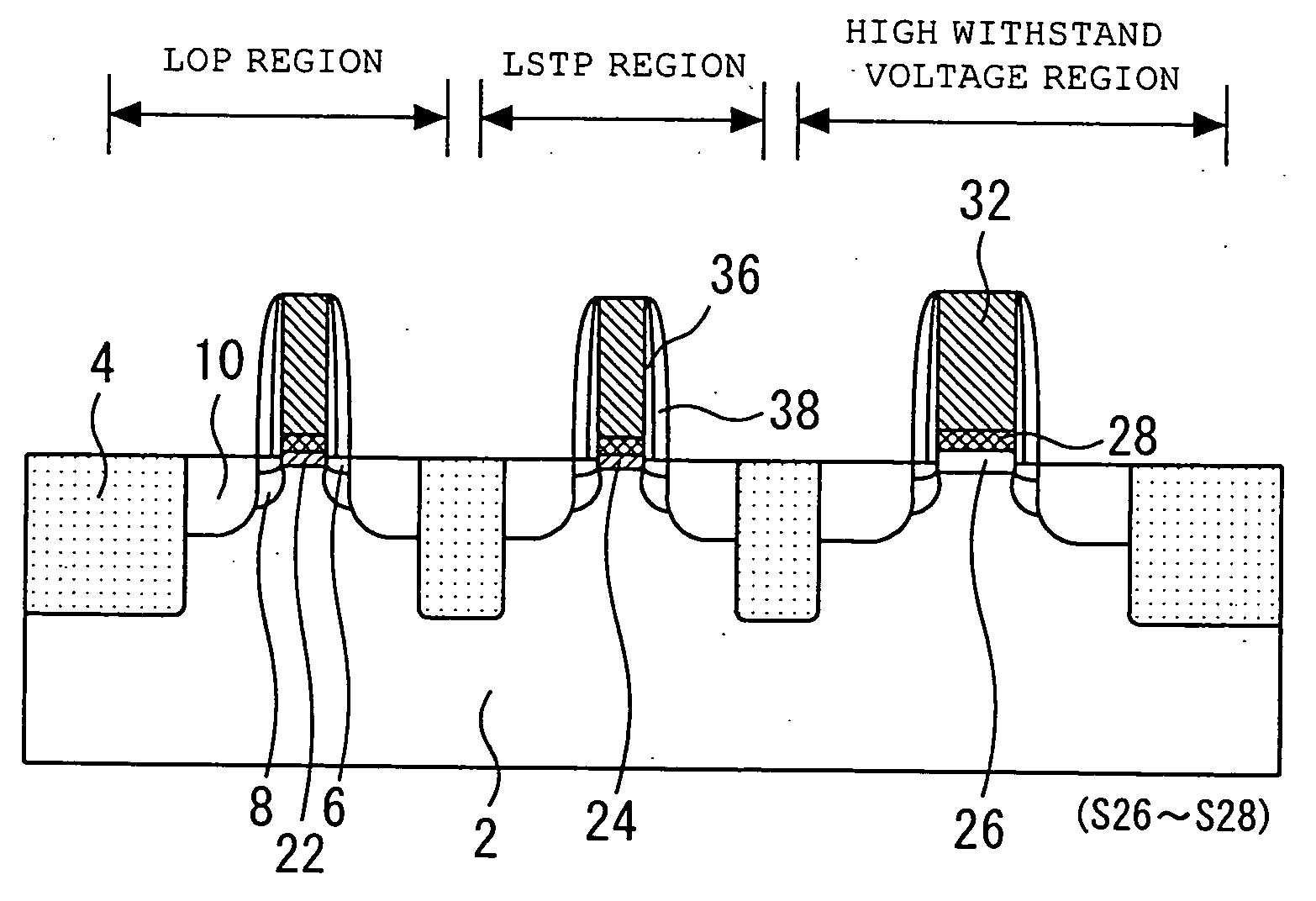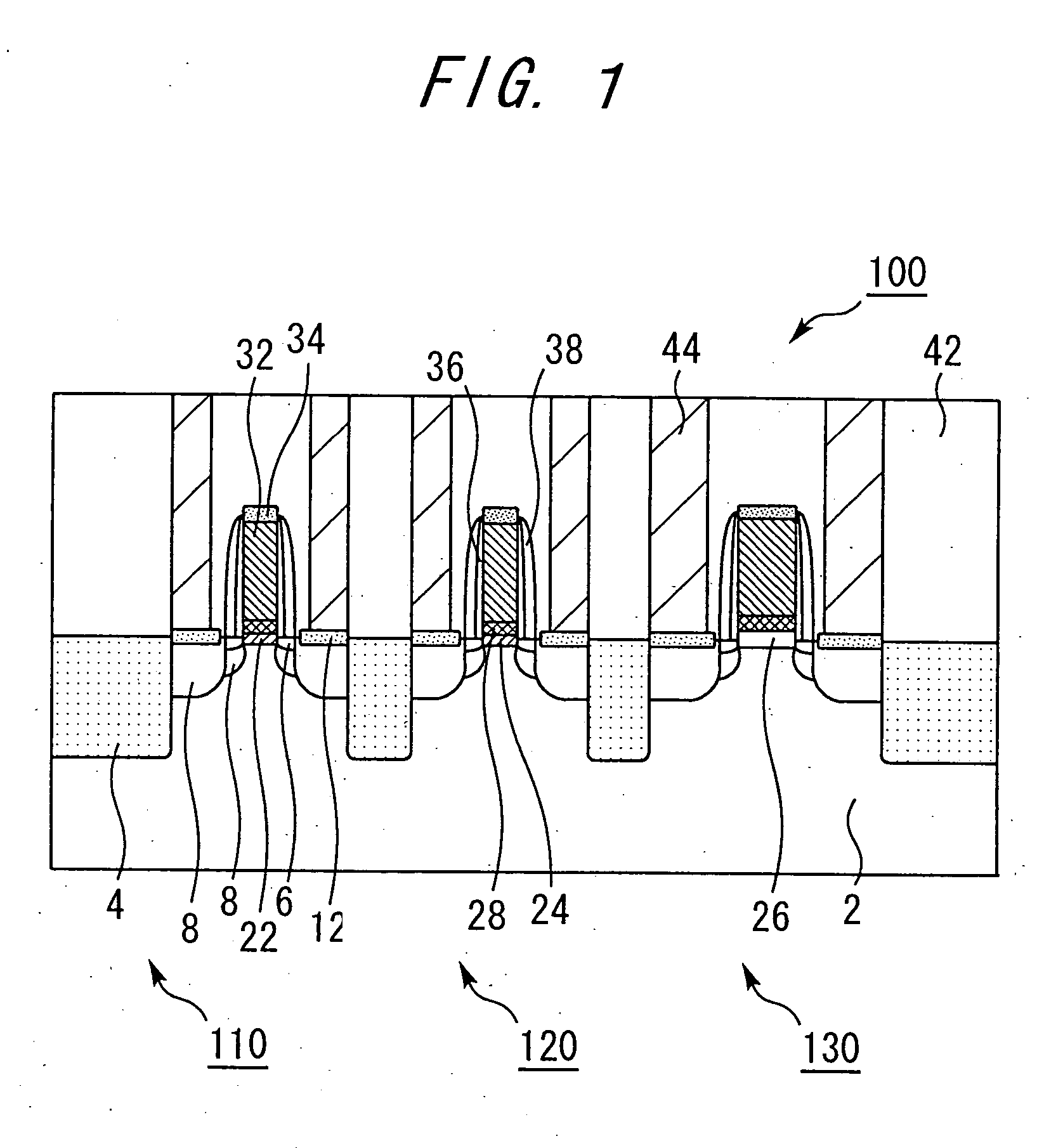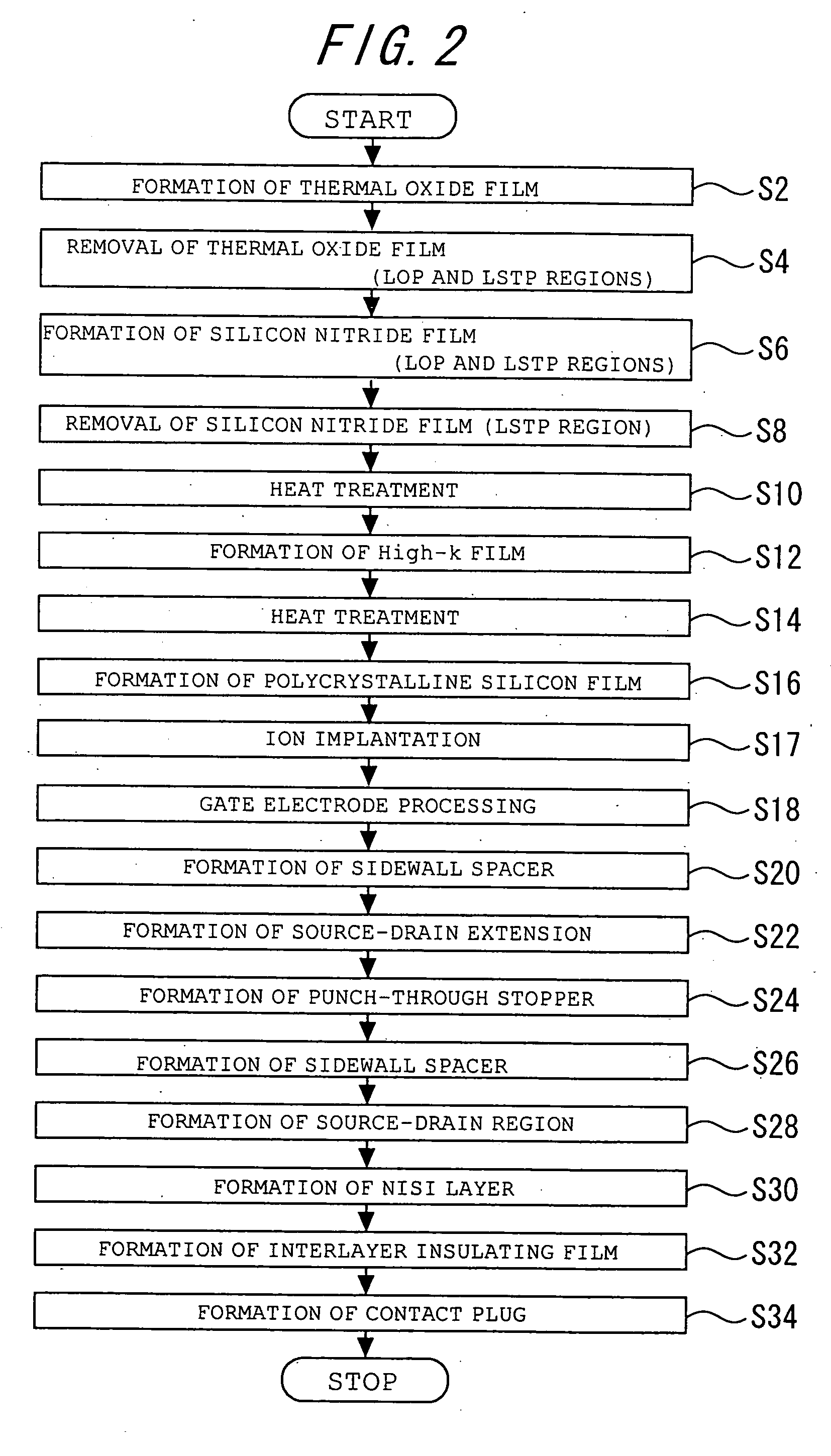Semiconductor device and method for manufacturing semiconductor device
a semiconductor and semiconductor technology, applied in the direction of semiconductor devices, electrical devices, transistors, etc., can solve the problems of increasing power consumption, difficult mass production, and difficulty in controlling the thickness of high-k films formed
- Summary
- Abstract
- Description
- Claims
- Application Information
AI Technical Summary
Benefits of technology
Problems solved by technology
Method used
Image
Examples
first embodiment
[0029] First Embodiment
[0030]FIG. 1 is a schematic sectional view for illustrating an SoC (system on chip) 100 according to the first embodiments of the present invention.
[0031] As FIG. 1 shows, the SoC 100 is composed of a MISFET (metal insulator semiconductor field effect transistor) 110 for LOP (low operating power) (hereafter referred to as MISFET for LOP 110); an MISFET 120 for LSTP (low stand-by power) (hereafter referred to as MISFET for LSTP 120); and an MISFET 130 for high withstand voltage (hereafter referred to as MISFET for high withstand voltage 130).
[0032] The MISFETs for LOP 110, for LSTP 120, and for high withstand voltage 130 are formed in regions of an Si substrate 2 isolated by STI (shallow trench isolation) 4., respectively.
[0033] On each region of the Si substrate 2 isolated by STI 4, a source-drain extension 6, which is a diffusion layer having a relatively shallow junction and a low impurity content is formed, and a punch-through stopper 8 is formed underne...
second embodiment
[0075] Second Embodiment
[0076]FIG. 12 is a flow diagram for illustrating the method for manufacturing an SoC according to the second embodiment of the present invention.
[0077] The SoC manufactured in the second embodiment is structurally similar to the SoC 100 described in the first embodiment. However, in the SoC of the second embodiment, the EOT of the silicon oxynitride film 22 of the MISFET for LOP 110 is about 0.7 nm, and the nitrogen content in the silicon oxynitride film is 15 to 25%. The thickness of the silicon oxynitride film 24 of the MISFET for LSTP 120 is about 1.0 nm, and the EOT thereof is also about 1.0 nm. The nitrogen content in the silicon oxynitride film 24 is 1% or less.
[0078] The method for manufacturing an SoC according to the second embodiment is also similar to the manufacturing method described in the first embodiment.
[0079] However, in the second embodiment, the heat treatment in a nitrogen monoxide atmosphere at about 800 to 900° C. for 5 to 60 seconds...
PUM
| Property | Measurement | Unit |
|---|---|---|
| thickness | aaaaa | aaaaa |
| thickness | aaaaa | aaaaa |
| thickness | aaaaa | aaaaa |
Abstract
Description
Claims
Application Information
 Login to View More
Login to View More - R&D
- Intellectual Property
- Life Sciences
- Materials
- Tech Scout
- Unparalleled Data Quality
- Higher Quality Content
- 60% Fewer Hallucinations
Browse by: Latest US Patents, China's latest patents, Technical Efficacy Thesaurus, Application Domain, Technology Topic, Popular Technical Reports.
© 2025 PatSnap. All rights reserved.Legal|Privacy policy|Modern Slavery Act Transparency Statement|Sitemap|About US| Contact US: help@patsnap.com



